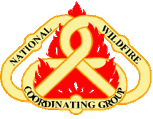In response to Safenet #20170727-0001 and discussion with the many of the IA resources that responded to the Raven Fire, the Battle Mountain District found some valuable learning points.
Learning Point 1: There may have been confusion in the management level that was in place to incoming resources. A type 4 incident commander was in command of the fire. There were multiple overhead on scene, however, at that point in time none were qualified at the type 3 IC level, but was in route. The Battle Mountain District assigns a BC title to the single resources that have TFLD or higher qualifications. With numerous BC’s on scene, resources may have been confused as to who’s role was what to all incoming resources. The Future action is to ensure the IC is quickly identified, what level the incident is operated under, and identify any supporting functions.
Learning Point 2: The ENGB that was asked to assume the role of operations is qualified as ENBG and ICT4. At the type 4 level of command structure, command and general staff positions are generally not filled, nor are there any designated qualifications per Red Book. The Future action is specific command and general staff identifiers, such as OPS, should be reserved for type 3 and above incidents. We must be mindful of the use of specific command and general staff identifiers on type 5 or 4 incidents. Utilizing points of contacts should be the preferred method.
Learning Point 3: The engine crew was provided clear leader’s intent to stay in the black and clear a parking area and not to tactically engage the engine. The crew was is in hard black and they were not operating out of their scope. Engine staffing requirements within the Red Book were discussed as to what alternatives are out there when an ENGB steps off to assume another position. If there is no alternative, the engine will be put out of service. The Future action is to tie crew members with other engines based on Red Book policy, if the engine is to be tactically utilized.
Learning Point 4: Communication on the line of sight operational tac was very poor from the fireline to the staging area. Communication was occurring over the command channel and very little information was being passed over this channel to tactical resources at the staging area. The Future action is ensure that alternate methods such as human repeaters need to be more frequently utilized to ensure proper information is being passed to all resources.
The complexity of the fire and the amount or resources that were being committed to the Raven Fire was quickly picked up on by management and a qualified Type 3 Incident Commander was ordered and enroute. The resources on scene were planning and setting up a successful organization with what was on scene until the proper qualified individuals could transition over. As the incident was transitioned from Type 4 to Type 3, the support functions such as OPS were transitioned out to the appropriately qualified individuals to meet Red Book policy for a Type 3 Incident.
Additionally, due to our fuel loading and the fire behavior that we have experienced this season, it is safe to assume that incidents will become type 3, especially with those fires that require greater travel times. We will continue to staff fires with Type 3 Incident Commanders through our run cards or assigning one on initial response. |



